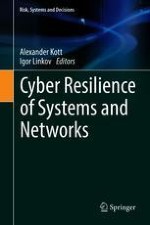2019 | OriginalPaper | Buchkapitel
8. Modeling and Simulation Approaches
verfasst von : David Ormrod, Benjamin Turnbull
Erschienen in: Cyber Resilience of Systems and Networks
Aktivieren Sie unsere intelligente Suche, um passende Fachinhalte oder Patente zu finden.
Wählen Sie Textabschnitte aus um mit Künstlicher Intelligenz passenden Patente zu finden. powered by
Markieren Sie Textabschnitte, um KI-gestützt weitere passende Inhalte zu finden. powered by
